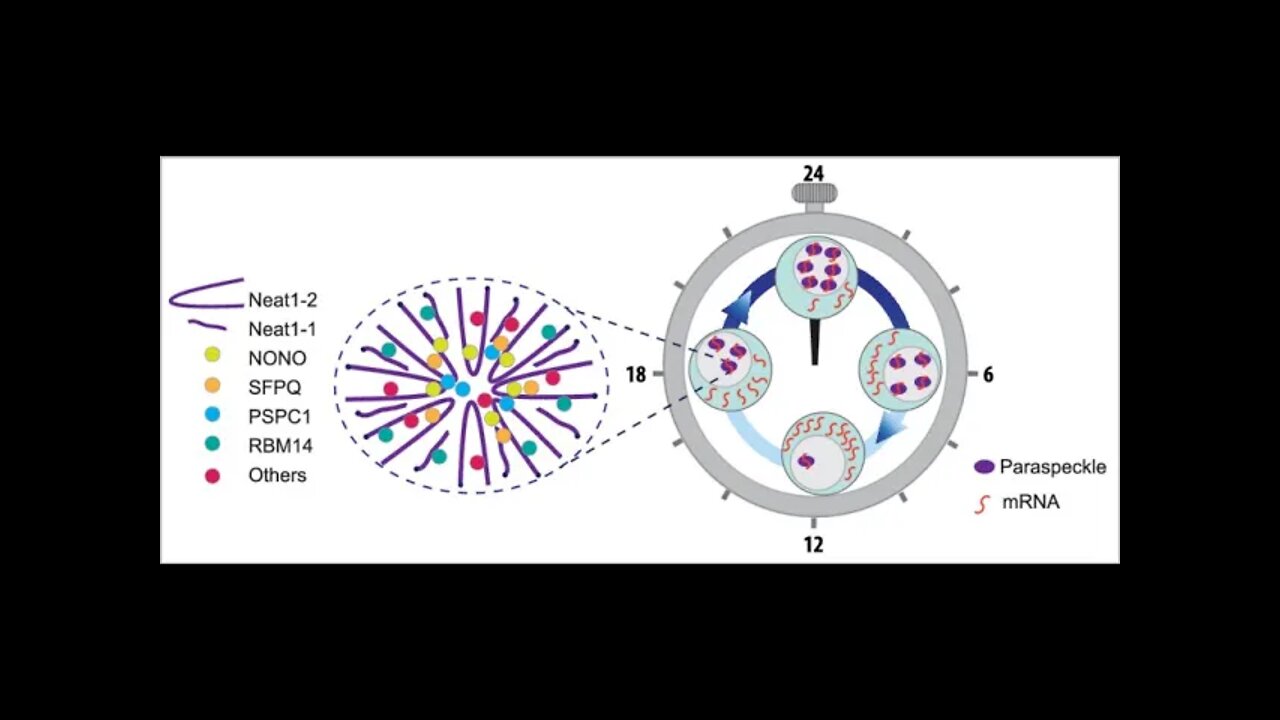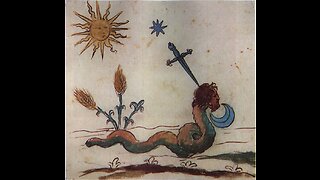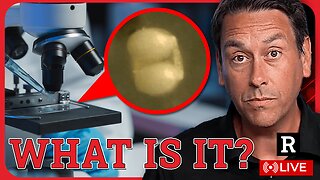Premium Only Content

Paraspeckles
Prion-like domains in RNA binding proteins are essential for building subnuclear paraspeckles
https://www.ncbi.nlm.nih.gov/pmc/articles/PMC4539981/
Borreliae, Human Relapsing Fever, Parasite -Vector-Host Relationships
https://www.ncbi.nlm.nih.gov/pmc/articles/PMC441260/pdf/bactrev00144-0058.pdf
Extracellular vesicles as modulators of cell-to-cell communication in the healthy and diseased brain.
Abstract
Homeostasis relies heavily on effective cell-to-cell communication. In the central nervous system (CNS), probably more so than in other organs, such communication is crucial to support and protect neurons especially during ageing, as well as to control inflammation, remove debris and infectious agents.
Emerging evidence indicates that extracellular vesicles (EVs) including endosome-derived exosomes and fragments of the cellular plasma membrane play a key role in intercellular communication by transporting messenger RNA, microRNA (miRNA) and proteins.
In neurodegenerative diseases, secreted vesicles not only remove misfolded proteins, but also transfer aggregated proteins and prions and are thus thought to perpetuate diseases by 'infecting' neighbouring cells with these pathogenic proteins. Conversely, in other CNS disorders signals from stressed cells may help control inflammation and inhibit degeneration. EVs may also reflect the status of the CNS and are present in the cerebrospinal fluid indicating that exosomes may act as biomarkers of disease.
That extracellular RNA and in particular miRNA, can be transferred by EV also indicates that these vesicles could be used as carriers to specifically target the CNS to deliver immune modulatory drugs, neuroprotective agents and anti-cancer drugs. Here, we discuss the recent evidence indicating the potential role of exosomes in neurological disorders and how knowledge of their biology may enable a Trojan-horse approach to deliver drugs into the CNS and treat neurodegenerative and other disorders of the CNS.
Gammaherpesvirus Infection of Human Neuronal Cells
https://pubmed.ncbi.nlm.nih.gov/26628726/
Proteomics analysis of amyloid and nonamyloid prion disease phenotypes reveals both common and divergent mechanisms of neuropathogenesis
https://pubmed.ncbi.nlm.nih.gov/25140793/
There's no such things as viruses. They are "lytic" ~bacterial associated, stress induced morphological forms of infinite antigenic variations in less than 2 seconds under antibiotic stress!
Remember why Relapsing Fever relapses.
Lyme bacteria Cyst formation with detail https://youtu.be/lVmCa70bAxE
Lyme Net Europe.org
https://www.lymeneteurope.org/forum/viewtopic.phpf=13&t=5147&start=20&fbclid=IwAR18bMATRoubbcMuRdQfJxmDVA3aFuKkTVlGdC3UF6X2ZFDTp1uuLq4Srp0
-

Epstein Borreliosis AIDS
2 years agoMel Thornburg, Sepsis
1.44K12 -
 1:18:49
1:18:49
Kim Iversen
6 hours agoEXPOSED: Inside Tim Pool’s Secret Meeting with Netanyahu | Trump’s Tariff Gamble: Boost for America or Death Blow?
119K212 -
 5:28:29
5:28:29
Biscotti-B23
6 hours ago $0.69 earned🔴 LIVE GETSUGA GAUNTLET 🔥 TRAINING FOR RANKED ⚔ BLEACH REBIRTH OF SOULS
16.7K -
 1:19:00
1:19:00
Sarah Westall
3 hours agoMassive Spiral Structures Found Under Giza Pyramids, Advanced Ancient Societies w/ Jay Anderson
38.5K13 -
 54:32
54:32
LFA TV
10 hours agoStrongman Stare Down | TRUMPET DAILY 4.9.25 7PM
45.4K7 -
 1:35:31
1:35:31
Redacted News
6 hours agoBioweapons over America? U.S. Geo-engineering caught raining mysterious objects over U.S. | Redacted
180K246 -
 1:19:20
1:19:20
vivafrei
8 hours agoCanadian Government & Courts Denying Military Jab Injury Compensation? Trump Pronouns "No Thanks"?
116K37 -
 54:20
54:20
Candace Show Podcast
6 hours agoHarvey Weinstein Calls Out Justin Baldoni | #MAHA Gaslighting Begins | Candace Ep 174
114K109 -
 22:26
22:26
Exploring With Nug
9 hours ago $1.17 earnedI Found a Heavy Bag Underwater Scuba Diving! What's Inside?
25.3K1 -
 LIVE
LIVE
Dr Disrespect
10 hours ago🔴LIVE - DR DISRESPECT - WARZONE VERDANSK - THE NUKE
1,474 watching